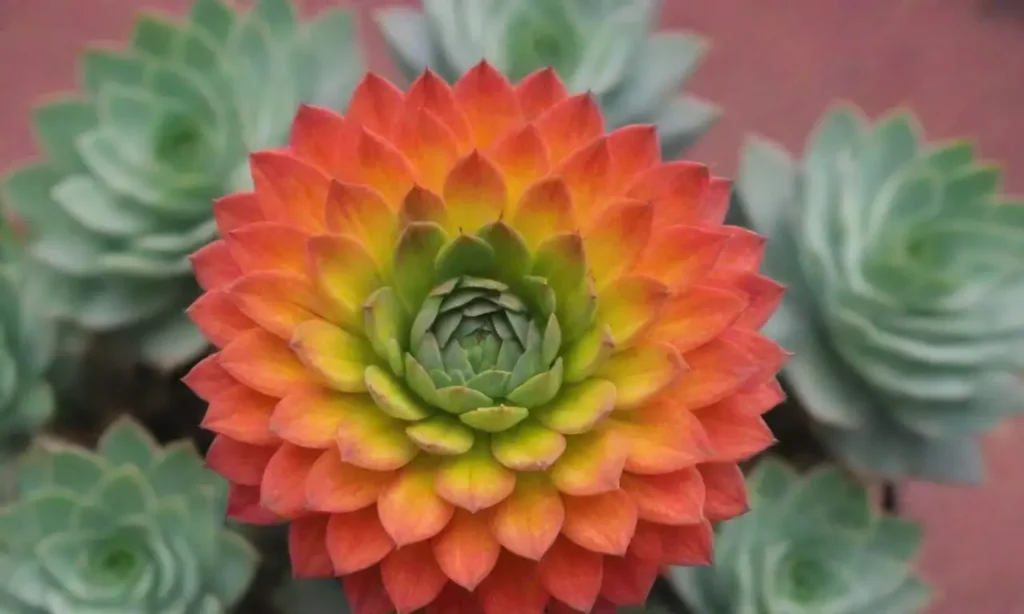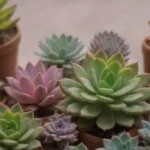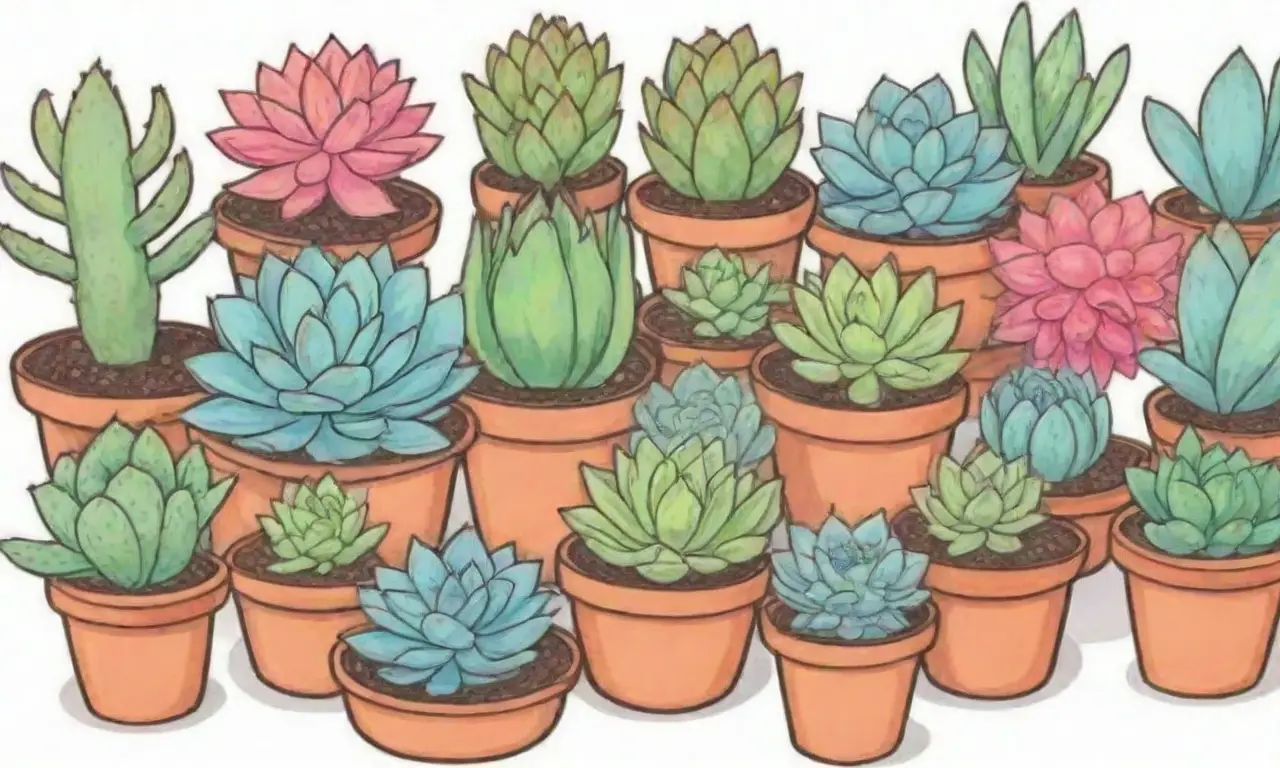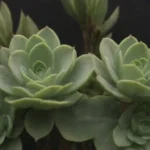Treating Sunburned Succulents: Recovery Tips and Tricks

Introduction
Succulents are beloved for their unique beauty and resilience, often thriving in arid climates with minimal care. However, even these hardy plants can suffer from sunburn, a common issue that arises when succulents are exposed to excessive sunlight, particularly after being moved to a brighter location or during a dramatic change in seasons. Sunburn in succulents manifests as discoloration, wrinkled leaves, or even leaf drop, indicating that these wonderful plants are struggling to cope with the intense light.
In this article, we will delve deep into the topic of sunburned succulents, exploring the symptoms of sun damage, how to effectively treat your affected plants, the best practices to prevent further sunburn, and tips for ensuring your succulents remain vibrant and healthy. By understanding these aspects, you’ll be better prepared to care for your plants and enhance their chances of recovery.
Understanding Sunburn in Succulents
Sunburn in succulents occurs primarily due to a sudden increase in light intensity or direct sunlight exposure that exceeds what the plant can handle. Unlike outdoor plants that naturally acclimate to varying light conditions, indoor plants often struggle if they are suddenly placed in a much brighter environment. Symptoms of sunburn can vary, but commonly include yellowing or browning of the leaves, especially at the tips and edges. In more severe cases, the tissue of the leaves can become crispy, and you may observe a general decline in the health of the plant with signs of stress such as wilting or droopy foliage.
When succulents are sunburned, the damage can often be alarming. Denser or thicker-leaved species, such as Aloe or Echeveria, may display the worst signs of sunburn, with their leaves turning soft and mushy if the plant has been overexposed. This often leads to a compromised ability to photosynthesize effectively, causing further complications in the plant’s health. Identifying sunburn early is crucial; the longer you allow the plant to remain in an inappropriate light setting, the harder it will be for it to bounce back.
Additionally, we should consider environmental factors that contribute to sunburn. Factors such as high temperatures, low humidity, and insufficient watering practices can compound the effects of excessive sunlight on succulents. Understanding these aspects will help you develop comprehensive care strategies for your plants and ensure their well-being.
Recovery Tips for Sunburned Succulents
When you first notice that your succulent has suffered from sunburn, it’s important to act quickly to minimize damage. One of the first steps is to relocate the plant to a more suitable environment. Move it to an area with indirect sunlight, such as a room with filtered light, or place it near a window that does not receive harsh afternoon sun. This change in environment allows the succulent to recover without the added stress of bright light exposure.
Next, assess the damaged leaves and prune any that are severely affected. Carefully remove the leaves that have turned brown or are crispy, as these will primarily drain the plant's energy. Use sterile scissors to avoid introducing any bacteria or pathogens. This pruning process will help direct the plant's energy towards healthier parts, allowing it to focus on recovery. Additionally, ensure that you’re not overwatering the plant during this recovery phase, as stressed succulents are more susceptible to root rot.
 How to Identify and Treat Common Diseases in Succulents
How to Identify and Treat Common Diseases in SucculentsAnother crucial aspect of helping sunburned succulents to recover is proper watering. It is important to check the moisture level of the soil before watering. If the plant is stressed due to sun exposure, it may require less frequent watering than usual. Only water when the top inch of soil feels dry to the touch to prevent water logging, which could further damage the plant. You might consider using a moisture meter to keep track of the water needs of your succulents during this recovery process.
Monitoring for Pests and Diseases
After relocating and treating your sunburned succulents, it is essential to monitor them closely for signs of pests or diseases that may take advantage of the weakened state of the plant. Common pests that may attack sunburned succulents include aphids, mealybugs, and spider mites. These pests often find distressed plants as easy targets, so be vigilant. Inspect the leaves thoroughly for sticky residue, webbing, or tiny insects. If you notice any signs of infestation, a gentle cleaning with a mild soap solution can help eliminate them. For more serious infestations, neem oil or insecticidal soap may be beneficial.
Besides pests, sunburn can sometimes lead to fungal infections, particularly if the plant is kept in a humid environment without adequate airflow. Always ensure that you have proper air circulation around your succulents. If you notice black spots or any sign of mushiness, that might indicate rot, and immediate action is necessary. Ensure the soil has good drainage, and consider repotting your succulent using fresh, well-aerated soil to help combat any potential diseases.
Nutrient Boosting
Finally, to aid in recovery, give your succulents a nutrient boost after the initial treatment. Once you notice new growth and the plant seems to be stabilizing, consider using a diluted, balanced fertilizer designed specifically for succulents and cacti. The best time to fertilize is during the growing season, typically in spring and early summer, while avoiding fertilization in the fall and winter months when succulents naturally go dormant. Opt for a slow-release fertilizer to provide a gradual nutrient supply, which is far less likely to burn your plants compared to concentrated, fast-release options.
In addition to fertilizer, consider adding organic matter or compost to your soil mix if your succulents are recovering well. This will promote healthy root growth and reinvigorate the plant during its healing process. Remember to follow the instructions on the fertilizer’s package to avoid over-application, which can lead to further issues.
Preventing Future Sunburns

Once your succulents have recovered from sunburn, it is crucial to implement practices that will prevent future occurrences. Gradual acclimatization is key when placing your succulents in a new environment with increased light levels. Spend several days or weeks slowly exposing the plant to more light, starting with a few hours of indirect sunlight before moving it to brighter spots.
 Identifying Common Pest Problems Affecting Succulent Plants
Identifying Common Pest Problems Affecting Succulent PlantsAnother preventive measure is to monitor the seasonal changes in sunlight intensity. As the seasons shift, so does the angle of the sunlight. During spring and summer, the sun can be particularly harsh, and it may be necessary to temporarily relocate your succulents to a shadier area during peak sunlight hours of the day. Regular monitoring of light levels and adjusting your plant placement according to seasonal changes in sunlight will help maintain the health of your succulents.
Additionally, learning about the specific light needs of the different varieties of succulents in your collection can greatly aid in preventing future sunburn incidents. Some succulents may thrive in full sun, while others prefer moderate or low light conditions. Research the specific recommendations for each type of succulent and tailor your care plan accordingly.
Finally, keep a plant journal where you can track each plant's development and any changes in their environment. Documenting these details will not only help you when it comes to troubleshooting but will also allow you to develop a better understanding of what works best for your plants over time. This proactive approach will contribute significantly to the overall health of your succulent collection.
Conclusion
Treating sunburned succulents requires a multifaceted approach that combines immediate care treatments, proper relocation strategies, and ongoing vigilant monitoring. The initial recognition of sunburn symptoms, followed by prompt action to relocate, prune, and adjust your watering practices, can make a significant difference in the recovery process. By understanding the unique requirements of your succulents and implementing preventive measures, you can significantly reduce the risk of future sunburn incidents and ensure that your plants remain vibrant and healthy.
Incorporating routine checks of your succulents, being aware of their environmental preferences, and fostering a nurturing atmosphere can greatly enhance their resilience. These small actions contribute to a thriving plant environment that allows your succulents to flourish.
Ultimately, caring for succulents should be a rewarding and enjoyable experience. With the right knowledge and strategies, you can become more attuned to your plants' needs, leading to a thriving succulent collection that enriches your living space. A little understanding goes a long way in ensuring that sunburned succulents can not only recover but also continue to thrive in your care.
 Signs of Overwatering: Identifying Issues in Succulent Care
Signs of Overwatering: Identifying Issues in Succulent CareIf you want to read more articles similar to Treating Sunburned Succulents: Recovery Tips and Tricks, you can visit the Common diseases category.
